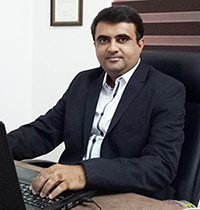Prevention is usually better than cure but if you can’t prevent something from happening then you should be aware of the issue and what steps can be taken to deal with it. This will inevitably save further problems from developing.
Spondylolisthesis is the name given to slipped vertebrae. They usually sit on top of each other in alignment. However if one of these vertebrae slips forward the structure of the spine will be affected. This causes tensions and places strain on discs and facet joints. The result is arthritis of the joint which can be extremely painful and even cause problems with movement.
While Spondylolisthesis can be a result of aging, it can also be an issue in young children and adolescents, particularly because their spines are still growing and settling into the correct position.
If this condition is no noticed or left untreated the vertebra will be weakened and ultimately, the spine will be unable to maintain its proper position. This condition is referred to as Spondylolysis and is different from Spondylolisthesis although closely related.
Spondylolysis is the term used when a fracture appears in the front part of the vertebrae. It’s common in children because of development or repetitive sports. In adults this often becomes Spondylolisthesis, this is when the front piece of the vertebrae actually breaks off and tips forward. It can be from overuse or from a genetic weakness.
The Symptoms
In advanced cases you’ll experience pain in your lower back, this may radiate into your buttocks and even your legs. You will also experience stiffness in your legs, especially the hamstrings. As it progresses it’s normal to develop tight hamstrings and experience issues walking properly.
However, in the early stages, there are very few symptoms other than a little back pain. In these situations, the condition isn’t usually discovered unless an x-ray is undertaken.
If you have repetitive slips the nerves leading to your legs may be damaged, resulting in tingling and phantom pain. You may even experience weakness in your legs.
Treatment
The first step is always to try the non-surgical approach. This means rest, specifically avoiding sports that may have contributed to the condition. You can also take anti-inflammatory drugs to reduce swelling and painkillers to relieve the pain.
Stretching exercises are also a good idea to increase flexibility and loosen tight hamstrings. If this isn’t successful your doctor may prescribe a back brace, to give your vertebrae time to heal properly.
Should non-surgical not be successful your doctor may choose to give you spinal fusion. This is when the affected vertebrae are literally fused with the vertebrae next to it. This strengthens it and prevents it from slipping again. The idea is that because it can’t move it won’t cause pain, although there is still some risk of pain after the procedure.
You’ll need to have a progressive worsening vertebrae slippage to justify this procedure.
As in all cases like this, the real key is seeing your doctor f you have back pain and following their advice to get the best possible outcome.

